SLVS847A November 2008 – December 2016 TPS54917
PRODUCTION DATA.
- 1 Features
- 2 Applications
- 3 Description
- 4 Revision History
- 5 Device Comparison Table
- 6 Pin Configuration and Functions
- 7 Specifications
-
8 Detailed Description
- 8.1 Overview
- 8.2 Functional Block Diagram
- 8.3
Feature Description
- 8.3.1 Undervoltage Lockout (UVLO)
- 8.3.2 Slow Start or Enable (SS/ENA)
- 8.3.3 VBIAS Regulator (VBIAS)
- 8.3.4 Voltage Reference
- 8.3.5 Oscillator and PWM Ramp
- 8.3.6 Error Amplifier
- 8.3.7 PWM Control
- 8.3.8 Dead-Time Control and MOSFET Drivers
- 8.3.9 Overcurrent Protection
- 8.3.10 Thermal Shutdown
- 8.3.11 Power Good (PWRGD)
- 8.4 Device Functional Modes
- 9 Application and Implementation
- 10Power Supply Recommendations
- 11Layout
- 12Device and Documentation Support
- 13Mechanical, Packaging, and Orderable Information
7 Specifications
7.1 Absolute Maximum Ratings
over operating free-air temperature range (unless otherwise noted)(1)| MIN | MAX | UNIT | ||
|---|---|---|---|---|
| Input voltage, VI | SS/ENA, SYNC | –0.3 | 7 | V |
| RT | –0.3 | 6 | ||
| VSENSE | –0.3 | 4 | ||
| VIN | –0.3 | 4.5 | ||
| BOOT | –0.3 | 10 | ||
| Output voltage, VO | VBIAS, PWRGD, COMP | –0.6 | 7 | V |
| PH | –0.6 | 6 | ||
| PH (transient < 10 ns) | –2 | |||
| Source current, IO | PH | Internally limited | mA | |
| COMP, VBIAS | 6 | |||
| Sink current, IS | PH | 16 | A | |
| COMP | 6 | mA | ||
| SS/ENA, PWRGD | 10 | |||
| Voltage differential (AGND to PGND) | ±0.3 | V | ||
| Operating virtual junction temperature, TJ | –40 | 125 | °C | |
| Storage temperature, Tstg | –65 | 150 | °C | |
(1) Stresses beyond those listed under Absolute Maximum Ratings may cause permanent damage to the device. These are stress ratings only, which do not imply functional operation of the device at these or any other conditions beyond those indicated under Recommended Operating Conditions. Exposure to absolute-maximum-rated conditions for extended periods may affect device reliability.
7.2 ESD Ratings
| VALUE | UNIT | |||
|---|---|---|---|---|
| V(ESD) | Electrostatic discharge | Human-body model (HBM), per ANSI/ESDA/JEDEC JS-001(1) | ±2000 | V |
| Charged-device model (CDM), per JEDEC specification JESD22-C101(2) | ±500 | |||
(1) JEDEC document JEP155 states that 500-V HBM allows safe manufacturing with a standard ESD control process.
(2) JEDEC document JEP157 states that 250-V CDM allows safe manufacturing with a standard ESD control process.
7.3 Recommended Operating Conditions
over operating free-air temperature range (unless otherwise noted)| MIN | MAX | UNIT | ||
|---|---|---|---|---|
| VI | Input voltage | 3 | 4 | V |
| TJ | Operating junction temperature | –40 | 125 | °C |
7.4 Thermal Information
| THERMAL METRIC(1) | TPS54917 | UNIT | |
|---|---|---|---|
| RUV (VQFN) | |||
| 34 PINS | |||
| RθJA | Junction-to-ambient thermal resistance | 27.6 | °C/W |
| RθJC(top) | Junction-to-case (top) thermal resistance | 14.8 | °C/W |
| RθJB | Junction-to-board thermal resistance | 7.1 | °C/W |
| ψJT | Junction-to-top characterization parameter | 0.2 | °C/W |
| ψJB | Junction-to-board characterization parameter | 7.5 | °C/W |
| RθJC(bot) | Junction-to-case (bottom) thermal resistance | 1.5 | °C/W |
(1) For more information about traditional and new thermal metrics, see the Semiconductor and IC Package Thermal Metrics application report.
7.5 Electrical Characteristics
TJ = –40°C to 125°C and VI = 3 V to 4 V (unless otherwise noted)| PARAMETER | TEST CONDITIONS | MIN | TYP | MAX | UNIT | |
|---|---|---|---|---|---|---|
| SUPPLY VOLTAGE, VIN | ||||||
| VIN input voltage | 3 | 4 | V | |||
| Quiescent current | fs = 350 kHz, SYNC ≤ 0.8 V, RT open, PH pin open | 9.8 | 17 | mA | ||
| fs = 550 kHz, SYNC ≥ 2.5 V, RT open, PH pin open | 14 | 23 | ||||
| Shutdown, SS/ENA = 0 V | 1 | 1.4 | ||||
| UNDERVOLTAGE LOCKOUT (UVLO) | ||||||
| Start threshold voltage | 2.95 | 3 | V | |||
| Stop threshold voltage | 2.7 | 2.8 | ||||
| Hysteresis voltage | 0.16 | V | ||||
| Rising and falling edge deglitch(1) | 2.5 | µs | ||||
| BIAS VOLTAGE (VBIAS) | ||||||
| VO | Output voltage | I(VBIAS) = 0 | 2.7 | 2.8 | 2.9 | V |
| Output current(2) | 100 | µA | ||||
| CUMULATIVE REFERENCE | ||||||
| Vref | Accuracy | 0.882 | 0.891 | 0.9 | V | |
| REGULATION | ||||||
| Line regulation(1) | IL = 4.5 A, fs = 350 kHz, TJ = 85°C | 0.07% | V | |||
| IL = 4.5 A, fs = 550 kHz, TJ = 85°C | 0.07% | |||||
| Load regulation(1) | IL = 0 A to 9 A, fs = 350 kHz, TJ = 85°C | 0.03% | A | |||
| IL = 0 A to 9 A, fs = 550 kHz, TJ = 85°C | 0.03% | |||||
| OSCILLATOR | ||||||
| Internally set free-running frequency | SYNC ≤ 0.8 V, RT open | 280 | 350 | 420 | kHz | |
| SYNC ≥ 2.5 V, RT open | 440 | 550 | 660 | |||
| Externally set free-running frequency | RT = 100 kΩ (1% resistor to AGND) | 460 | 500 | 540 | kHz | |
| RT = 27 kΩ (1% resistor to AGND) | 1480 | 1600 | 1720 | |||
| High-level threshold voltage, SYNC | 2.5 | V | ||||
| Low-level threshold voltage, SYNC | 0.8 | V | ||||
| Pulse duration, SYNC(1) | 50 | |||||
| Frequency range, SYNC | 330 | 1600 | kHz | |||
| Ramp valley(1) | 0.75 | V | ||||
| Ramp amplitude (peak-to-peak)(1) | 1 | V | ||||
| Minimum controllable on time | 160 | ns | ||||
| Maximum duty cycle | 90% | |||||
| ERROR AMPLIFIER | ||||||
| Error amplifier open loop voltage gain | 1 kΩ COMP to AGND(1) | 90 | 110 | dB | ||
| Error amplifier unity gain bandwidth | Parallel 10 kΩ, 160 pF COMP to AGND(1) | 3 | 5 | MHz | ||
| Error amplifier common-mode input voltage range | Powered by internal LDO(1) | 0 | VBIAS | V | ||
| IIB | Input bias current, VSENSE | VSENSE = Vref | 60 | 250 | nA | |
| VO | Output voltage slew rate (symmetric), COMP(1) | 1 | 1.4 | V/µs | ||
| PWM COMPARATOR | ||||||
| PWM comparator propagation delay time | PWM comparator input to PH pin (excluding dead time), 10-mV overdrive(1) | 70 | 85 | ns | ||
| SLOW START/ENABLE (SS/ENA) | ||||||
| Enable threshold voltage | 0.82 | 1.2 | 1.4 | V | ||
| Enable hysteresis voltage(1) | 0.03 | V | ||||
| Falling edge deglitch(1) | 2.5 | µs | ||||
| Internal slow-start time | 2.6 | 3.35 | 4.1 | ms | ||
| Charge current | SS/ENA = 0 V | 3 | 5 | 8 | µA | |
| Discharge current | SS/ENA = 1.3 V, VI = 1.5 V | 1.5 | 2.3 | 4 | mA | |
| POWER GOOD (PWRGD) | ||||||
| Power good threshold voltage | VSENSE falling | 90 | %Vref | |||
| Power good hysteresis voltage(1) | 3 | %Vref | ||||
| Power good falling edge deglitch(1) | 35 | µs | ||||
| Output saturation voltage | I(sink) = 2.5 mA | 0.18 | 0.3 | V | ||
| Leakage current | VI = 5.5 V | 1 | µA | |||
| CURRENT LIMIT | ||||||
| Current limit trip point | VI = 3.3 V(1), output shorted | 11 | 15 | A | ||
| Current limit leading edge blanking time(1) | 100 | ns | ||||
| Current limit total response time(1) | 200 | ns | ||||
| THERMAL SHUTDOWN | ||||||
| Thermal shutdown trip point(1) | 135 | 150 | 165 | °C | ||
| Thermal shutdown hysteresis(1) | 10 | °C | ||||
| OUTPUT POWER MOSFETS | ||||||
| rDS(on) | Power MOSFET switches | VI = 3 V | 13.5 | 26 | mΩ | |
| VI = 3.6 V | 12.5 | 24 | ||||
(1) Specified by design
(2) Static resistive loads only
7.6 Typical Characteristics
 Figure 1. Drain-Source On-State Resistance
Figure 1. Drain-Source On-State Resistancevs Junction Temperature
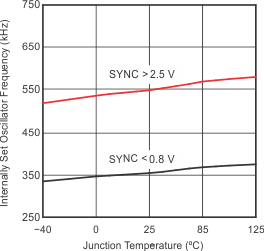 Figure 3. Internally Set Oscillator Frequency
Figure 3. Internally Set Oscillator Frequencyvs Junction Temperature
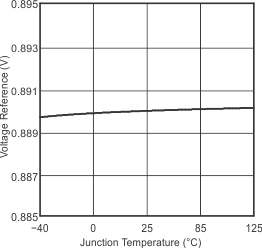 Figure 5. Voltage Reference
Figure 5. Voltage Referencevs Junction Temperature
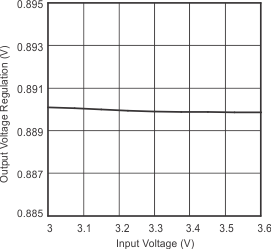 Figure 7. Output Voltage Regulation
Figure 7. Output Voltage Regulationvs Input Voltage
 Figure 9. Internal Slow-Start Time vs Junction Temperature
Figure 9. Internal Slow-Start Time vs Junction Temperature
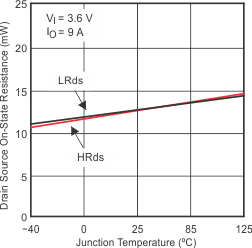 Figure 2. Drain-Source On-State Resistance
Figure 2. Drain-Source On-State Resistancevs Junction Temperature
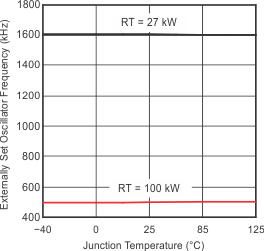 Figure 4. Externally Set Oscillator Frequency
Figure 4. Externally Set Oscillator Frequencyvs Junction Temperature
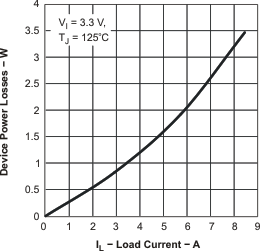 Figure 6. Device Power Losses vs Load Current
Figure 6. Device Power Losses vs Load Current
 Figure 8. Error Amplifier vs Open Loop Response
Figure 8. Error Amplifier vs Open Loop Response